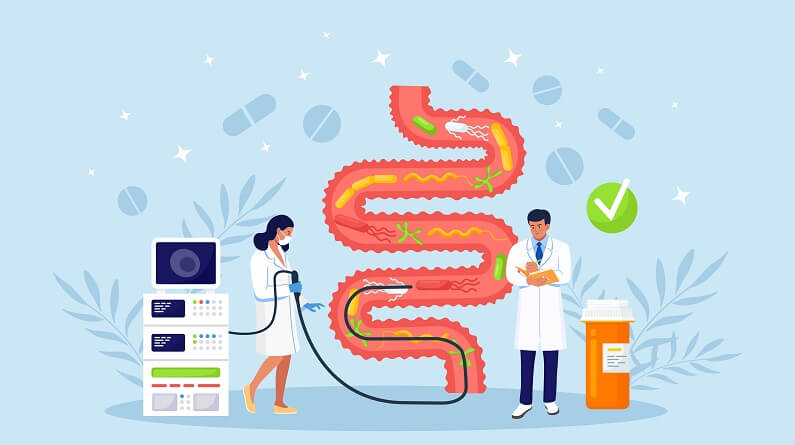The Large Intestine: The Final Stage of Digestion
The large intestine, also known as the colon, is the last part of the digestive system. It plays a crucial role in extracting water, electrolytes, and vitamins from the undigested food that enters from the small intestine. The large intestine is home to a diverse community of friendly microorganisms that aid in fermentation and the production of essential vitamins.
The Journey of Food Through the Digestive System
The digestive process begins in the mouth, where saliva breaks down food into smaller molecules. The food then travels down the esophagus into the stomach, where it is further broken down by stomach acids and enzymes. The partially digested food, now called chyme, enters the small intestine, where most of the nutrient absorption takes place.
The Structure and Function of the Large Intestine
The large intestine is approximately 116 centimeters long and is divided into six sections:
1. Cecum: Receives chyme from the small intestine
2. Appendix: Not directly involved in digestion, but part of the gut-associated lymphoid tissue
3. Ascending Colon: Absorbs water and leftover nutrients
4. Transverse Colon: Further absorbs water and electrolytes
5. Descending Colon: Stores feces before emptying into the rectum
6. Rectum: Holds feces before elimination through the anus
The Importance of Gut Flora
The large intestine is home to a dense collection of friendly microorganisms that aid in fermentation and the production of essential vitamins, such as vitamin K, thiamin, and riboflavin. These microorganisms play a crucial role in maintaining a healthy gut and overall well-being.
Maintaining a Healthy Large Intestine
A diet rich in fiber can help keep the large intestine healthy and functional. Adequate fiber intake can prevent constipation, promote regular bowel movements, and support the growth of beneficial gut bacteria.
References:
https://en.wikipedia.org/wiki/Large_intestine
https://www.ncbi.nlm.nih.gov/books/NBK507857/
https://opentextbc.ca/anatomyandphysiology/chapter/23-5-the-small-and-large-intestines/
https://medlineplus.gov/ency/imagepages/19220.htm
https://www.webmd.com/digestive-disorders/picture-of-the-intestines#1

